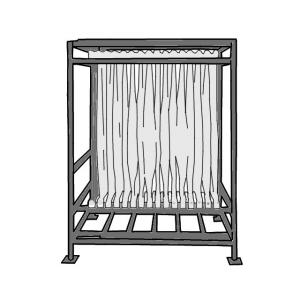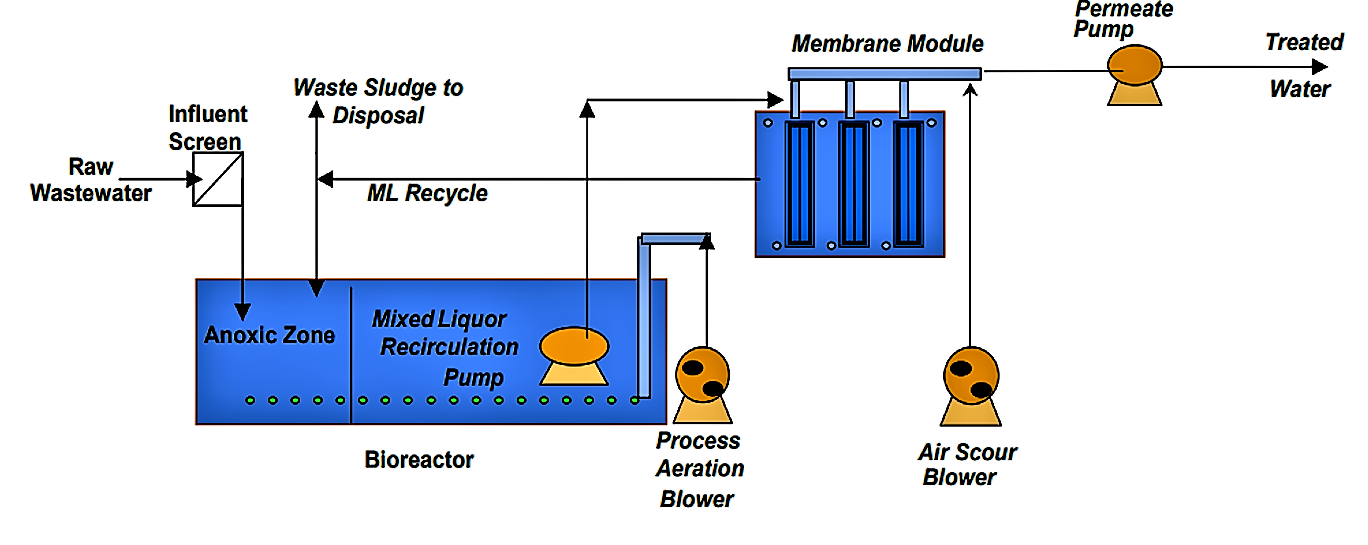Recognizing Membrane Layer Bioreactors: The Future of Wastewater Therapy
Membrane bioreactors (MBRs) represent a significant development in the area of wastewater therapy, integrating organic procedures with advanced membrane purification to enhance effluent high quality. As international water scarcity and rigid governing frameworks become progressively pushing issues, MBR technology uses a reliable response with its capability to decrease impact and optimize resource healing.
What Are Membrane Layer Bioreactors?

The core elements of MBR systems include a bioreactor where microbial task happens and a membrane layer system that filterings system the blended alcohol. This double performance allows the synchronised degradation of raw material and solid-liquid splitting up in a solitary action. MBRs can run in both immersed and outside setups, with submerged systems being much more typical because of their compact design and functional performance.
The fostering of MBR modern technology has actually gotten traction in various applications, ranging from municipal wastewater treatment to commercial effluent monitoring. MBRs are especially beneficial in scenarios where space is limited or rigorous effluent high quality criteria need to be satisfied. By maintaining a high focus of microbes within the bioreactor, MBRs improve the degradation of natural contaminants, thus yielding greater treatment efficiencies contrasted to standard techniques.
Key Advantages of MBR Technology
The combination of biological treatment with membrane layer filtering in MBR systems offers countless advantages that establish it apart from standard wastewater treatment techniques. Among the primary advantages is the enhanced effluent high quality. MBRs effectively eliminate put on hold virus and solids, achieving higher degrees of filtration that meet rigid discharge standards and facilitate water reuse applications.

An additional significant advantage is the decreased sludge manufacturing. MBR systems create much less excess sludge, causing reduced disposal prices and a decrease in environmental effect. The closed nature of the membrane layer system lessens the threat of smell emissions and enhances overall process control.
Finally, MBRs are adaptable and versatile, making them suitable for various wastewater types, including industrial and community sources. The ability to integrate with advanced treatment technologies even more enhances their effectiveness, making MBRs an encouraging solution for the future of wastewater administration.
Challenges and Limitations of MBRs
While MBR modern technology offers many benefits, it additionally encounters numerous difficulties and restrictions that can impact its widespread fostering. One substantial difficulty is the high funding and operational costs linked with MBR systems. The first financial investment for membrane materials and the necessary framework can be considerable, making it less accessible for smaller districts or markets.
In addition, membrane layer fouling remains a crucial concern that can lessen system performance and increase next upkeep demands. Fouling takes place when solids, raw material, or microbes collect on the membrane surface area, resulting in reduced leaks in the structure and requiring constant cleaning or substitute.
One more limitation entails the complexity of the modern technology. MBR systems need skilled employees for operation and upkeep, which can be a barrier in areas with minimal technical proficiency. The disposal of spent membrane layers presents environmental problems, as the materials are commonly not biodegradable and can contribute to lose management difficulties.
Finally, while MBRs can properly treat a vast array of wastewater, they may not be appropriate for all applications, specifically those with high focus of fats, oils, and greases, requiring additional study and innovation to deal with these constraints.
Applications of Membrane Layer Bioreactors
In various fields, membrane layer bioreactors (MBRs) have actually arised as visit homepage a versatile solution for wastewater treatment (Membrane Bioreactor). Their applications cover local, commercial, and farming setups, showcasing their adaptability and effectiveness in diverse environments. In community wastewater treatment plants, MBRs considerably improve effluent high quality, enabling water reuse and lowering the ecological influence of released wastewater
Industrially, MBRs are used in food and drink handling, fabric production, and pharmaceutical manufacturing, where they successfully deal with high-strength waste streams. Their ability to manage changing tons and varying contaminant concentrations makes them particularly beneficial in these fields. In addition, MBRs promote the elimination of microorganisms, suspended solids, and organic issue, adding to conformity with rigorous discharge guidelines.
In farming, you can try these out MBRs are progressively utilized for treating farming drainage and livestock wastewater, enabling the recovery of nutrients for plant food manufacturing. They also aid in the therapy of greywater for irrigation, advertising sustainable water management techniques.
The adaptability of MBRs is additional evidenced by their assimilation with other technologies, such as anaerobic digestion and progressed oxidation processes, enhancing total efficiency and source recovery in wastewater therapy systems.
The Future of Wastewater Treatment
Advancements in modern technology and a growing focus on sustainability are shaping the future of wastewater therapy. Membrane bioreactors (MBRs) exhibit this shift by integrating biological treatment processes with membrane layer purification, leading to high-quality effluent appropriate for reuse. The trend in the direction of circular economic situations is prompting centers to adopt MBRs for their capability to recover sources, such as water and nutrients, from wastewater.
Innovations in membrane products and setup are improving the performance and long life of MBR systems, lowering operational costs and energy intake. Smart technology assimilation, including real-time surveillance and automated control systems, is further enhancing efficiency and allowing predictive maintenance, therefore minimizing downtime.
Furthermore, governing pressures and societal assumptions are pressing municipalities and markets to take on more sustainable methods. Membrane Bioreactor. The change in the direction of decentralized wastewater treatment services is getting grip, allowing for localized treatment that decreases transport prices and power usage
Conclusion
Membrane bioreactors (MBRs) represent a transformative method to wastewater treatment, integrating organic procedures with sophisticated membrane layer modern technology. The benefits of MBRs, consisting of boosted effluent top quality, reduced spatial requirements, and lower sludge production, position them as a viable remedy amid expanding urbanization and more stringent ecological laws. Regardless of existing obstacles, the ongoing technology in membrane layer products and functional methods guarantees to reinforce the effectiveness and adoption of MBRs, ensuring their pivotal duty in the future of lasting wastewater administration.
Membrane layer bioreactors (MBRs) represent a noteworthy innovation in the field of wastewater therapy, incorporating biological processes with innovative membrane layer filtering to enhance effluent quality.Membrane layer bioreactors (MBRs) combine organic therapy processes with membrane purification to successfully treat wastewater.The integration of organic treatment with membrane purification in MBR systems uses various benefits that establish it apart from conventional wastewater treatment approaches. Membrane bioreactors (MBRs) exhibit this shift by incorporating biological treatment procedures with membrane purification, resulting in top notch effluent appropriate for reuse.Membrane layer bioreactors (MBRs) represent a transformative approach to wastewater therapy, integrating organic procedures with sophisticated membrane modern technology.